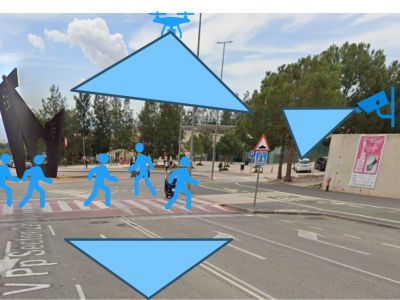Machine Learning

This dataset includes spectra of 250 corn samples with different vitality levels, with a data size of 250*256, categorized into five vitality grades. The imaging spectrometer employs a series spectrophotometer, model N17E, with a spectral range of 874-1734nm and a spectral resolution of 5nm. The CCD used is model ICL-B1410, featuring 1600×1200 pixels, and is equipped with an OLES22 lens with a focal length of 22mm.
- Categories:
 127 Views
127 ViewsThis dataset comprises 33,800 images of underwater signals captured in aquatic environments. Each signal is presented against three types of backgrounds: pool, marine, and plain white. Additionally, the dataset includes three water tones: clear, blue, and green. A total of 12 different signals are included, each available in all six possible background-tone combinations.
- Categories:
 484 Views
484 Views
1.Cora dataset is derived from a multi-group citation network, and the two-group subgraphs are selected for tasks such as graph neural network node classification. The dataset contains sparse Bag-of-Words feature vectors as node attributes, and the labels are mostly academic paper topic categories or fields. This subgraph focuses on the influence of graph structure and node characteristics on model prediction, which provides a reliable experimental benchmark for the research of multi-step adversarial attacks and defense strategies.
- Categories:
 97 Views
97 Views
Reinforcement Learning (RL) has shown excellent performance in solving decision-making and control problems of autonomous driving, which is increasingly applied in diverse driving scenarios. However, driving is a multi-attribute problem, leading to challenges in achieving multi-objective compatibility for current RL methods, especially in both policy execution and policy iteration. We propose a Multi-objective Ensemble-Critic reinforcement learning method with Hybrid Parametrized Action for multi-objective compatible autonomous driving.
- Categories:
 106 Views
106 ViewsThe presented dataset contains information about struts utilized in a material system, including three key attributes: strut diameter, strut type, and sample number. The strut diameter describes the structural element's physical dimension, whereas the strut type specifies the design or placement inside the material, such as edge configurations. A sample number is assigned to each sample, identifying it uniquely. This data can be used in machine learning systems to forecast material qualities, optimize designs, and investigate the effect of strut configurations on structural performance.
- Categories:
 184 Views
184 Views
This dataset comprises Terahertz (THz) images collected to support the research presented in the IEEE Access paper titled Diagnosing Grass Seed Infestation: Convolutional Neural Network Based Terahertz Imaging. The dataset is intended for the detection and classification of grass seeds embedded in biological samples, specifically ham, covered with varying thicknesses of wool. The images were captured at different frequencies within the THz spectrum, providing valuable data for the development of deep-learning models for seed detection.
- Categories:
 49 Views
49 Views
Can we perceive the three-dimensional posture of the whole human body solely from extremely low-resolution thermal images (e.g., $8\times8$-pixels)?
This paper investigates the possibility of this challenging task.
Thermal images capture only the intensity of radiation, making them less likely to contain personal information such as facial or clothing features.
Thermal sensors are commonly integrated into daily-use appliances, such as air conditioners, automatic doors, and elevators.
- Categories:
 95 Views
95 ViewsScene understanding in a contested battlefield is one of the very difficult tasks for detecting and identifying threats. In a complex battlefield, multiple autonomous robots for multi-domain operations are likely to track the activities of the same threat/objects leading to inefficient and redundant tasks. To address this problem, we propose a novel and effective object clustering framework that takes into account the position and depth of objects scattered in the scene. This framework enables the robot to focus solely on the objects of interest.
- Categories:
 336 Views
336 ViewsThis dataset was produced as part of the NANCY project (https://nancy-project.eu/), with the aim of using it in the fields of communication and
- Categories:
 303 Views
303 Views
Sign Language Recognition integrates computer vision and natural language processing to automatically interpret hand gestures and translate them into spoken or written Bengali. The primary goal is to bridge the communication gap between sign language users and non-users by recognizing gestures, movements, postures, and facial expressions that correspond to spoken language elements. Since hand gestures are the cornerstone of sign language communication, they play a pivotal role in improving the accuracy of sign language recognition systems.
- Categories:
 170 Views
170 Views


